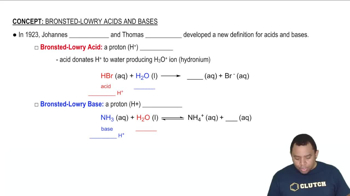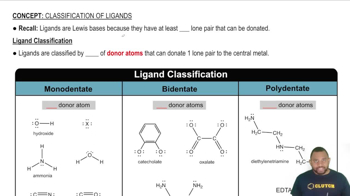Here are the essential concepts you must grasp in order to answer the question correctly.
Acid-Base Theory
Acid-base theory explains how substances can donate or accept protons (H+ ions). According to the Brønsted-Lowry theory, acids are proton donors, while bases are proton acceptors. This concept is crucial for understanding how ions interact with water to affect the pH of a solution.
Recommended video:
Bronsted-Lowry Acid-Base Theory
Hydrolysis of Ions
Hydrolysis refers to the reaction of an ion with water, leading to the formation of an acid or base. For example, when fluoride ions (F-) react with water, they can accept a proton, forming HF, which is a weak acid. This process determines whether the resulting solution is acidic, basic, or neutral.
Recommended video:
pH and Solution Classification
The pH scale measures the acidity or basicity of a solution, with values below 7 indicating acidity, above 7 indicating basicity, and 7 being neutral. Understanding how ions like F- affect the concentration of H+ ions in solution is essential for classifying the resulting solution as acidic, basic, or neutral.
Recommended video:
 Verified step by step guidance
Verified step by step guidance


